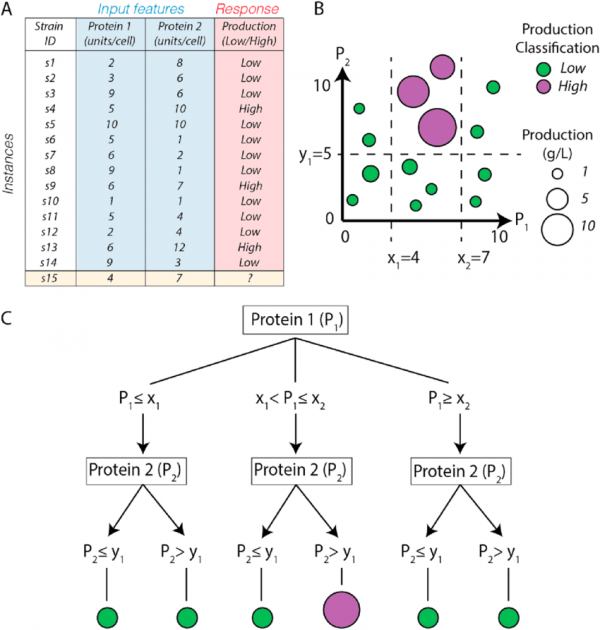
Decision trees are a popular type of algorithm used in artificial intelligence and machine learning. They are used for both classification and regression problems, and are known for their ability to generate interpretable models. In this article, we will discuss the basics of decision trees and how they work.
What is a Decision Tree?
At a high level, a decision tree is a tree-like model of decisions and their possible consequences. It starts with a single node, known as the root node, and then branches out into a number of child nodes. Each child node represents a decision, and the branches leading out of the node represent the possible outcomes of that decision. The process continues until a final decision is made, represented by a leaf node.
In the context of machine learning, decision trees are typically used for classification problems. The idea is to use the attributes of a given data point to build a tree of decisions that ultimately lead to a classification label. For example, we might build a decision tree to classify emails as either spam or not spam. The attributes used to build the tree might include things like the sender's email address, the subject line, and the contents of the email itself.
The construction of a decision tree typically involves two main steps: the selection of attributes to split on, and the creation of the tree itself. At each step, we choose the attribute that best separates the data into different classes. This process is repeated recursively until the tree is complete.
Uses of Decision Tree
One of the benefits of decision trees is their ability to handle both continuous and categorical data. This is achieved by splitting the data on specific values or ranges of values. Another advantage of decision trees is their interpretability. It is easy to understand the logic of the tree and the decision-making process, which can be particularly useful in fields like medicine, where interpretability is crucial.
In addition to classification problems, decision trees can also be used for regression problems. The idea is similar, but instead of predicting a categorical label, we predict a continuous value. For example, we might build a decision tree to predict the price of a house based on its attributes, such as the number of bedrooms, the square footage, and the location.
Code Example
Here's an example code for a decision tree classifier in Python:
from sklearn import datasets
from sklearn.tree import DecisionTreeClassifier
from sklearn.model_selection import train_test_split
from sklearn.metrics import accuracy_score
# load the iris dataset
iris = datasets.load_iris()
# split the dataset into features and labels
X = iris.data
y = iris.target
# split the dataset into training and testing data
X_train, X_test, y_train, y_test = train_test_split(X, y,
test_size=0.2, random_state=42)
# create the decision tree classifier
clf = DecisionTreeClassifier()
# train the classifier on the training data
clf.fit(X_train, y_train)
# make predictions on the test data
y_pred = clf.predict(X_test)
# calculate the accuracy of the classifier
accuracy = accuracy_score(y_test, y_pred)
print("Accuracy:", accuracy)
In this code, we are using the iris dataset, which is a common dataset for classification tasks. We split the dataset into training and testing data, create a decision tree classifier, train the classifier on the training data, make predictions on the test data, and calculate the accuracy of the classifier. The DecisionTreeClassifier class is imported from the sklearn.tree module, which is part of the scikit-learn library.
Conclusion
In summary, decision trees are a versatile and powerful tool in the world of artificial intelligence and machine learning. They are known for their ability to generate interpretable models and handle both categorical and continuous data. They have applications in a wide range of fields, from medicine to finance to marketing.